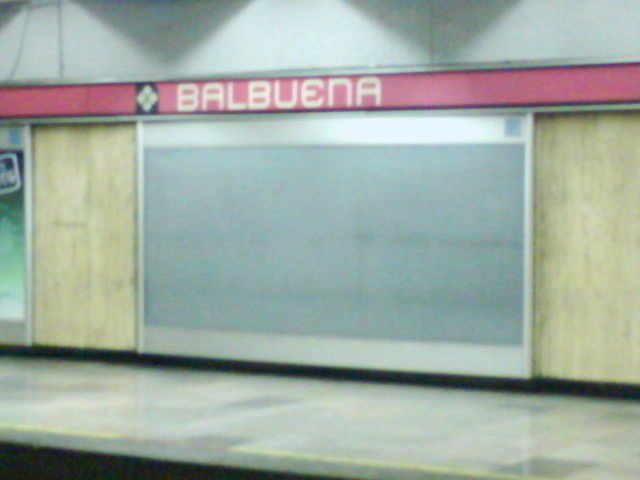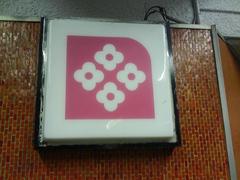
Balbuena, Mexico City: Visiting Hours, Tickets, and Historical Sites Guide
Date: 15/06/2025
Introduction: Experience Balbuena’s Authenticity and History
Balbuena, situated in the eastern part of Mexico City’s Venustiano Carranza borough, is a neighborhood where deep-rooted history merges with contemporary urban life. Its journey from pre-Hispanic marshlands to a vibrant, community-focused district mirrors Mexico City’s own evolution. Balbuena’s layered past, marked by milestones in aviation, architecture, and culture, offers visitors a compelling alternative to the city’s more frequented destinations. With accessible public spaces, vivid street art, and enduring traditions, Balbuena stands as a testament to the city’s resilience and creativity (Aztec History; Wikipedia: Jardín Balbuena).
This guide provides detailed historical context, practical visiting information, and insights into Balbuena’s cultural fabric—equipping travelers to immerse themselves in one of Mexico City’s most authentic neighborhoods.
Table of Contents
- Introduction
- Historical Background
- Cultural and Social Significance
- Practical Visitor Information
- Arts, Public Spaces, and Gastronomy
- Safety, Transportation, and Accommodation
- FAQ
- Conclusion
- Resources & Further Reading
Historical Background
Pre-Hispanic and Colonial Origins
The region now known as Balbuena was once part of the lake system surrounding Lake Texcoco, adjacent to the Mexica (Aztec) capital, Tenochtitlan (Aztec History). After the Spanish conquest, the area was gradually drained and converted into productive farmland called “Potrero de Balbuena.” The name references the Spanish poet Bernardo de Balbuena, whose 1604 poem Grandeza mexicana celebrated Mexico City’s splendor (Encyclopedia.com; Wikipedia: Jardín Balbuena).
19th Century: Ranchlands and Urbanization
In the 19th century, the area evolved into ranch and grazing land, known as “Llanos de Balbuena.” The influential Braniff family established haciendas here, foreshadowing the neighborhood’s future as a site of innovative development (Wikipedia: Jardín Balbuena).
Early 20th Century: Aviation Milestones
Balbuena played a pivotal role in Mexican aviation history. In January 1910, Alberto Braniff became the first Mexican to fly an airplane, taking off from the plains of Balbuena (Wikipedia: Jardín Balbuena). The area soon hosted the country’s first airfield and witnessed President Francisco I. Madero’s historic flight in 1911, consolidating Balbuena’s reputation as the cradle of Mexican aviation.
Mid-20th Century: Urban Planning and Community Life
By the 1950s, Balbuena underwent significant urban transformation. The Bank of Mexico financed the development of Jardín Balbuena, designed by pioneering architects Mario Pani and Agustín Landa Verdugo. Modernist housing complexes like Unidad Kennedy (1964) introduced new standards for communal living, integrating green spaces, markets, and innovative architecture (MexicoCity.cdmx.gob.mx).
Earlier architectural examples, such as those near Parque Obrero, reflect the progressive vision of the area’s planners and continue to shape Balbuena’s unique urban character.
Cultural and Social Significance
Balbuena exemplifies Mexico City’s post-revolutionary drive toward modernization and social cohesion. Its community-focused housing, lively markets, and enduring traditions—like the Quema de Judas ritual during Holy Week—underscore a living heritage that values both progress and cultural identity (Roads & Kingdoms). The neighborhood’s proximity to sites of Aztec origin and its ongoing celebration of religious and social festivals foster a sense of continuity and belonging among residents and visitors alike.
Practical Visitor Information
Visiting Hours & Tickets
- Neighborhood and Parks: Public spaces such as Parque Francisco Villa (Parque Balbuena) and Jardín Balbuena are open daily, typically from 6:00 AM to 9:00 PM. Entry is free.
- Markets: Mercado Balbuena and Mercado Unidad Kennedy operate daily from 7:00 AM to 6:00 PM, with no admission fees.
- Cultural Centers: Centro Cultural Carranza is open Tuesday–Sunday, 10:00 AM–7:00 PM. Most events are free, but some may require tickets, available on-site or online.
- Religious Sites: Churches like Parroquia de la Sagrada Familia welcome visitors daily from 7:00 AM to 8:00 PM; donations are appreciated.
Getting There & Accessibility
- Metro: Balbuena Metro Station (Line 1) provides direct access to the area (MexicoCity.cdmx.gob.mx).
- Bus & Taxi: RTP buses, trolleybuses, and ride-hailing apps (Uber, Didi) are widely available.
- Accessibility: Most public spaces, parks, and the metro station are wheelchair accessible; some older buildings may not be fully adapted.
Attractions & Tours
- Historical Walks: Guided tours can be arranged in advance, focusing on Balbuena’s architectural landmarks, murals, and local markets.
- Street Art: Murals along Avenida Francisco del Paso y Troncoso and community walls showcase Mexico’s muralist tradition (National Geographic).
- Photography: The parks, markets, and street art provide rich opportunities for photography. Permission is recommended when photographing people or events.
Events & Festivals
- Quema de Judas: This traditional festival takes place during Holy Week, with effigy burnings and community celebrations (Roads & Kingdoms).
- Community Fiestas: Independence Day and local religious processions feature music, dance, and food stalls.
Arts, Public Spaces, and Gastronomy
Murals and Street Art
Balbuena’s walls are canvases for artists who draw on Mexico’s muralist legacy, depicting social themes and honoring community figures (National Geographic). Occasional street art tours introduce visitors to the stories behind these vibrant artworks.
Parks and Recreation
- Parque Francisco Villa: The neighborhood’s largest park, open daily, with walking paths, sports facilities, and picnic areas.
- Jardín Balbuena: A smaller, peaceful park known for its jacaranda blooms in spring.
Markets and Food
- Mercado Balbuena: Open daily, it’s the heart of the community for shopping and sampling local cuisine—tacos de suadero, tamales, and more.
- Street Food: Avenida Ignacio Zaragoza is lined with taquerías and street vendors. Don’t miss the panaderías for fresh pastries.
Safety, Transportation, and Accommodation
Safety Tips
- Balbuena is generally safe during the day; exercise standard precautions, especially after dark (The Broke Backpacker).
- Use authorized transport at night, secure your belongings, and stay in well-lit areas (Travellers Worldwide).
Transportation
- Metro and buses provide efficient, budget-friendly options for getting around.
- Ride-hailing services are recommended for late-night travel or airport transfers (Travel Safe Abroad).
Accommodation
- Budget-friendly hotels and guesthouses are available, especially near the metro.
- Check reviews for cleanliness and safety, and prioritize locations close to main transport hubs.
Frequently Asked Questions (FAQ)
Q: Are there entrance fees for Balbuena’s attractions?
A: Most parks, markets, and public spaces are free; the sports complex may have a nominal fee.
Q: What are the visiting hours for major sites?
A: Parks: 6:00 AM–9:00 PM; Markets: 7:00 AM–6:00 PM; Centro Cultural Carranza: 10:00 AM–7:00 PM, Tue–Sun.
Q: Is Balbuena family-friendly?
A: Yes, with playgrounds, markets, and community events suitable for all ages.
Q: How do I reach Balbuena from the airport?
A: Metro Line 1 and taxis provide direct access from Mexico City International Airport.
Q: Are guided tours available?
A: Yes, local operators offer walking tours focusing on art, history, and gastronomy.
Conclusion: Discover Balbuena’s Enduring Spirit
Balbuena offers travelers a unique blend of historical depth, artistic vibrancy, and welcoming community life. From its pioneering aviation history to its thriving markets and colorful festivals, Balbuena is a microcosm of Mexico City’s dynamism. The neighborhood’s accessibility, affordability, and authenticity make it an ideal destination for those seeking to experience the city beyond the main tourist circuits.
Plan your visit with the tips and information provided here, and immerse yourself in Balbuena’s living heritage. For more in-depth guides, event updates, and insider recommendations, download the Audiala app and follow our social media channels.
Resources & Further Reading
- Aztec History
- Wikipedia: Jardín Balbuena
- MexicoCity.cdmx.gob.mx – Metro Balbuena Station
- Roads & Kingdoms – Quema de Judas
- National Geographic – Mexican Muralism and Street Art
- MexicoCity.cdmx.gob.mx – Centro Cultural Carranza
- Encyclopedia.com – Bernardo de Balbuena
- Audiala Mobile App
- CDMX Metro Guide
- Travel Safe Abroad
- The Broke Backpacker
- Travellers Worldwide
- Mexico Travel Secrets
- Mexico Historico
- PlanetWare
- Nomadic Foodist











































































































































































